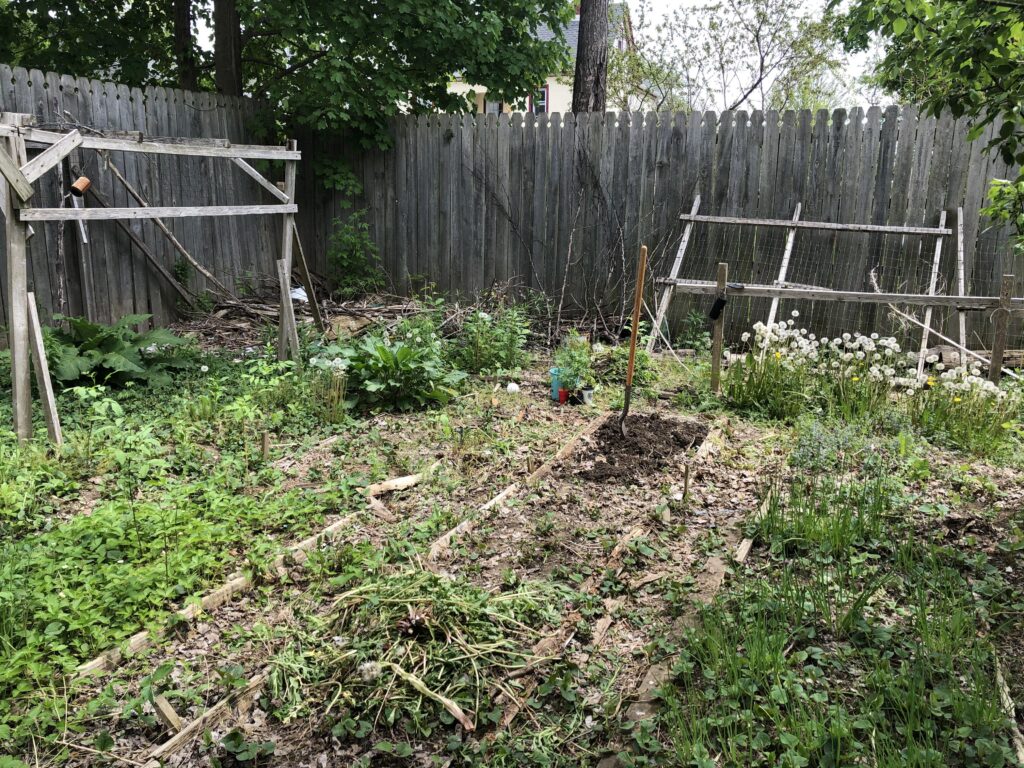
“You’ve been talking about your garden, ever since I met you”, a Grace parishioner told me after a recent reference probably in a sermon! Well, imagine the impact of my back and forth from Northern California on the poor thing. Thistles and rogue trees love it, as I am sure do the rabbits and chipmunks that dart around in the thick patches of weed.
Yet I remain impressed by the persistent flashes of color that refuse to yield to the wildness, and I think over time I may have found the right flowers that offer the possibility of hope in the midst of the neglect. It was several years ago, shortly after my own sabbatical, that I heard my flowers say out loud: “We can’t continue to do this all by ourselves, you know”. With the added scheduling of routine or follow up medical appointments during this time home from Grace, I wonder if my body is saying the same thing.
I have felt that the garden is always my Dorian Grey portrait! Dorian Grey is a Faustian story of a man who did a deal with the devil for perpetual youth, only to discover that over time his portrait in the attic would change according to his misdeeds. Of course, it is probably just the guilt of the Englishman at work, who believes somehow that green thumbs come with birth, for are we not known for our gardens?
Where am I going with this, I am not sure. Gardens are prominent in Holy Scripture. Creation kicks off in one in the book of Genesis, and human history culminates in one in the book of Revelation. And somewhere in the middle we find Jesus in the garden of Gethsemane, coming to terms with the reality of “offering His flesh for the life of the world”, as we have been reading together in Sunday’s gospel passages from John chapter 6.
It seems that this recent period together on Sundays has been full of references to bread, and in particular Jesus as the bread of life. We learned in the loaves and fishes’ story how Jesus takes what we have and makes it meet any and every need that comes. We saw Him identify with the staples of life – bread and wine – and point to them as representatives for His constant presence among us, and for His work of forgiving our failures and restoring our future. Furthermore, we are invited to eat and drink the bread as His body, and the wine as His blood, and so always be in communion with God. We have recognized that this is bread that consumes us as we consume it and pulls or draws us into God’s own life. So that in the end just as Christ offers his flesh for the life of the world, so we in Him offer ourselves for the life of the world. This is our call to serve.
This week, we read that a lot of people found this imagery too hard to embrace. And many walked away from following Jesus. And those who remained were challenged by Jesus as to whether they would also leave. The response: “To whom shall we go? You have the words of eternal life” says it all.
I am going to take whatever time I have at home to work away at the clearing of debris and the restoring of new life to my garden. It is overwhelming, but I will not walk away. For I have a vision of what can be. The flashes of color inspire me in that. I will explore professional help. I won’t manage everything alone. I will ask around for advice. I could also walk away and let winter take it all and try again next year!
I wonder if we are facing a similar option with our engagement with the work of faith and its community. In the end we are inspired by what we believe can be, and who we believe has the words of eternal life. And perhaps I could have taken a leaf out of Jesus’ story telling style and begun by saying: “The kingdom of God is like a man returning home to face the wild growth of his garden…” and made this a parable.
+Bishop Alan Scarfe

Recent Comments